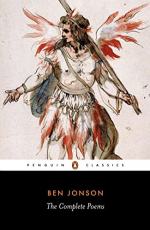|
This section contains 326 words (approx. 1 page at 400 words per page) |

|
A Sonnet to the Noble Lady, Lady Mary Wroth Summary & Study Guide Description
A Sonnet to the Noble Lady, Lady Mary Wroth Summary & Study Guide includes comprehensive information and analysis to help you understand the book. This study guide contains the following sections:
This detailed literature summary also contains Quotes and a Free Quiz on A Sonnet to the Noble Lady, Lady Mary Wroth by .
The following version of the poem was used to create this guide: Jonson, Ben. "A Sonnet to the Noble Lady, the Lady Mary Wroth." Poetry Foundation. https://www.poetryfoundation.org/poems/50679/a-sonnet-to-the-noble-lady-the-lady-mary-wroth
Note that all parenthetical citations within the guide refer to the lines of the poem from which the quotations are taken.
Ben Jonson was born on the 11th of June, 1572, in Westminster, England. His early life was marked by the period's political and religious conflicts, including his father's arrest and early death. He struggled to access a quality education, but was eventually freed from his apprenticeship as a bricklayer by volunteering to go to the Netherlands and assist England's allies in their war for independence. He was known as a military hero and was able to establish a career as an actor and playwright on his return.
Jonson soon became well known as both a performer and a writer. He married during this period, and had three children, none of whom lived to adulthood. By 1598, he had a reputation as a successful dramatist, but also faced difficulties. He was known for his contentious rivalry with William Shakespeare. Jonson's tragedies had limited success onstage, and he became known only for his comedies. He was briefly jailed for his co-authorship of the controversial play "The Isle of Dogs." Later, he barely escaped execution for manslaughter after killing another actor in a duel. In the wake of this incident, he converted to Catholicism. His work was admired by King James I, who elevated him to prominence within the court. He died in 1637 after a long period of illness.
Jonson would have met Lady Mary Wroth while he was working as a court writer, primarily an author of masques, short plays on classical mythological themes that were performed by members of the nobility. This poem is a sonnet of praise, using the romantic language of courtly love to express admiration for Wroth as a writer.
Read more from the Study Guide
|
This section contains 326 words (approx. 1 page at 400 words per page) |

|



